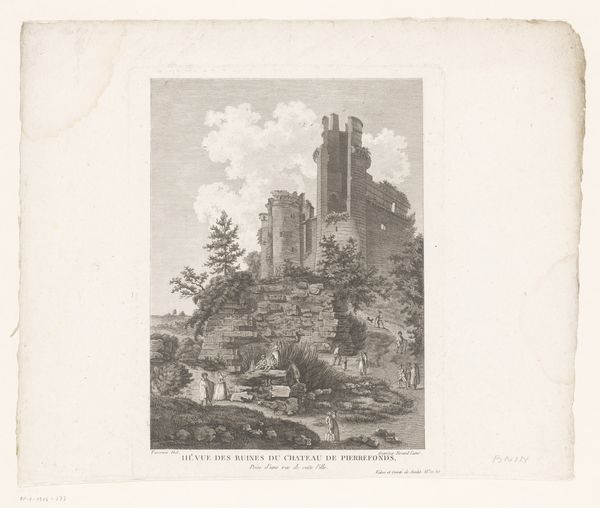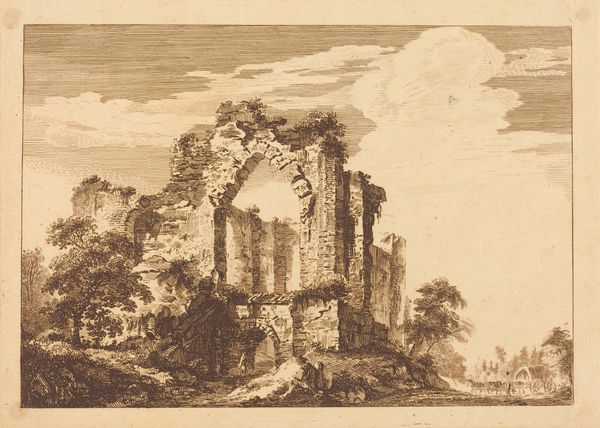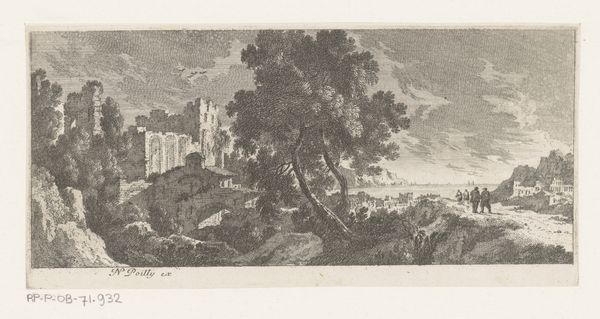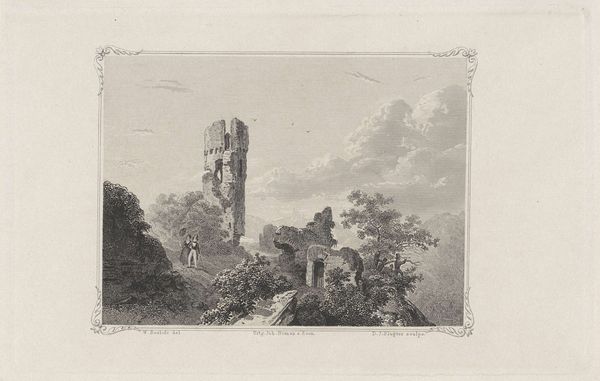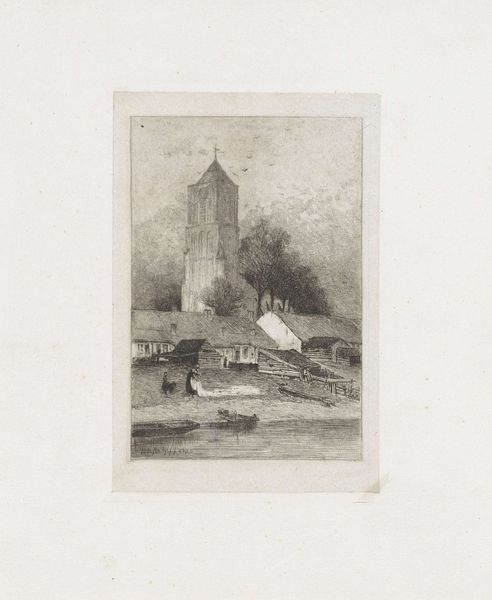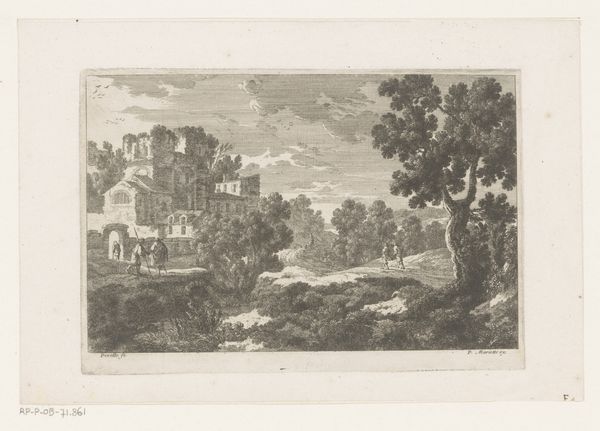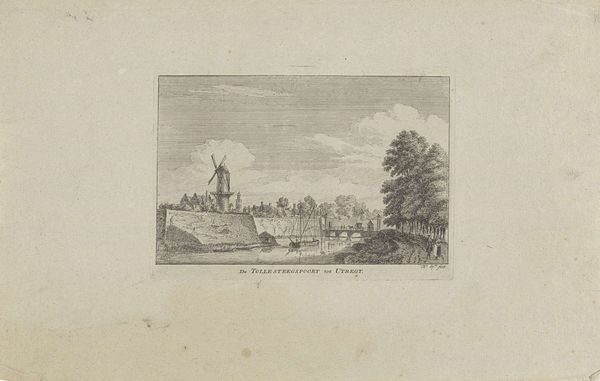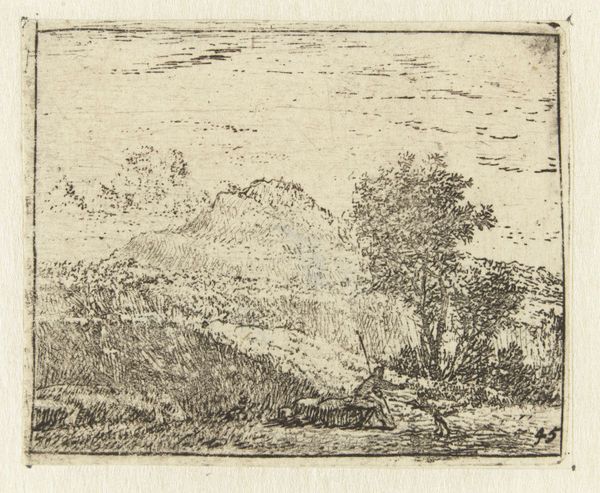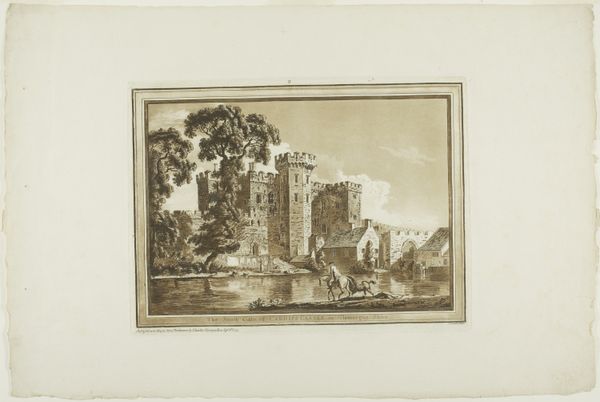
print, engraving
# print
#
landscape
#
romanticism
#
cityscape
#
engraving
Dimensions: height 237 mm, width 156 mm
Copyright: Rijks Museum: Open Domain
Curator: The setting sun radiates a peculiar power on this engraving by Reinier Vinkeles, an evocative rendition entitled "Ruïne bij zonsondergang." It's a print made before 1801, housed right here at the Rijksmuseum. Editor: Immediately, I am struck by how the light, emanating directly behind the ruins, almost gives the impression of a divine halo. There’s an interesting duality at play – decay versus illumination. Curator: Indeed. Vinkeles, operating within the Romantic tradition, often used ruins as potent symbols of the passage of time and the impermanence of human endeavor. Given the context of the late 18th century, amidst revolution and societal upheaval, this image could also serve as a commentary on crumbling social structures. Editor: It’s interesting how those particular ideas of time and civilization connect. You see this visual language quite often with Romanticism—a longing for some undefinable and irrecoverable past, rendered so palpably in stone. Ruins have always signaled those deeper, historical and symbolic associations with melancholy. Curator: Precisely, and the contrast with the bright sun suggests not just decay, but perhaps hope and resilience. The tiny figures beside the ruins almost become secondary—remnants within a ruin. One can see, within the visual vocabulary, a powerful intersection of the themes of societal decay with personal resilience. Editor: That visual counterpoint is particularly compelling. One feels drawn to consider its connection to a potential rise or an end of any era of society and personhood as a cyclical phenomenon through iconography—even an idea that societal death makes way for other life or light—an idea also visually rendered through that sunrise behind the structure. Curator: Absolutely. Vinkeles skillfully employs this image to evoke not just historical sentimentality but also prompts critical reflections on power structures, social change, and, ultimately, survival. Editor: I think this work highlights how a simple image, etched into a plate, can resonate far beyond its immediate visual appearance, embodying histories, emotions, and deeply entrenched cultural symbols.
Comments
No comments
Be the first to comment and join the conversation on the ultimate creative platform.
